10 Rules of Thumb for Trust Income Tax
Navigate the complexities and rules of trust income tax management and explore the advantages of creating a trust tailored to your needs.
Presented by: Kris Maksimovich, AIF®, CRPC®, CPFA®, CRC®
Rule 1: When in doubt, refer to the trust document; an investment policy for a trust cannot be created without it.
One advantage of creating a trust is that the grantor can have it tailored to his or her needs; therefore, although there may be provisions in common, trust documents vary widely.
The trust document provides instructions to the trustee for managing, investing, and distributing trust assets. It is the primary authority and can supplement or override powers given to the trustee by state law. If the trust document doesn’t address an issue, the trustee can refer to state law.
Just as each document is unique, so are each state’s trust statutes. There has been some effort among states to standardize trust law. That said, even states that have adopted the Uniform Trust Code have enacted their own version. If state law is silent, the trustee or beneficiaries can ask for interpretation or guidance from state courts.
Important Points
Managing trust investments follows the same general principles as managing investments for individuals. Factors that must be considered are account risk tolerance, time horizon, long-term goals, and the need for current income. Before you and your financial advisor begin a portfolio analysis, read the trust agreement. Here are some important points to consider
- Deciphering trust language can be a challenge; when in doubt as to the grantor’s intentions, contact the attorney who wrote the document as to the grantor’s intentions.
- Identify current beneficiaries and remainder persons.
- Note what each beneficiary is to receive and when. A trust might:
- Instruct that “net income” be paid to the spouse for life, with the remainder paid to the children or to a trust for the children at the spouse’s death; or
- Instruct the trustee to consider the beneficiary’s other resources before distributing income.
Rule 2: Except for differences in the marginal tax brackets, trusts are taxed much in the same way as individuals.
A trust is a separate tax entity. The general principles of income taxation that apply to individual taxpayers also apply to trusts. For example:
- Preferential capital gains rates are available to trusts.
- Trusts can earn tax-exempt income.
- Trusts may be subject to the alternative minimum tax.
- Trusts can deduct certain expenses to reduce taxable income.
The main difference between individual and trust tax rules is the marginal tax rate. It is compressed for trusts and therefore results in considerably higher tax rates for the same amount of taxable income.
Rule 3: Distributions of taxable income from the trust are taxed to the beneficiary.
The trust may get a distribution deduction for all or part of it. For taxation purposes, trusts can typically be divided into two camps:
- Grantor trusts. In which all income is taxed to the grantor, regardless of whether the grantor receives distributions from the trust. These trusts are treated as “alter egos” of the grantor for income tax purposes.
- Trusts that are treated as separate tax entities. These incur taxes on all income and capital gains received, but they may take a deduction for taxable income and capital gains passed to trust beneficiaries.
Revocable or irrevocable
A grantor trust can be either revocable or irrevocable as follows:
- Revocable grantor trust. All taxable income is reported on the grantor’s return—as long as the grantor is alive.
- Irrevocable grantor trust. In these instances, the grantor is accorded enough rights that the trust is considered irrevocable for gift and estate tax purposes. Trust income is treated as earned by the grantor, even if it is distributed to someone else. Examples of these trusts include grantor-retained annuity trusts, some charitable lead trusts, intentionally defective grantor trusts, and some life insurance trusts.
- Irrevocable trust. If a trust is not a grantor trust, it is considered a separate taxpayer. Taxable income retained by the trust is taxed to the trust. Distributed income is taxed to the beneficiary who receives it.
- Charitable remainder trust (CRT). This is a tax-exempt trust. As long as income is retained by the trust, no taxes are recognized under current rules. Distributions are taxed to the noncharitable beneficiary.
Rule 4: A grantor trust can be irrevocable for gift and estate tax purposes and still cause the grantor to recognize taxable income, even if they do not receive trust income.
A grantor trust uses the tax identification number of the grantor for income tax reporting. The trustee reports trust income, deductions, and credits to the grantor. The grantor, in turn, reports these items on his or her personal return. A revocable trust is a grantor trust while the grantor is alive. It becomes a separate tax entity after the grantor dies—even if the name of the trust stays the same.
Grantor Trusts
Irrevocable trusts can be intentionally structured as grantor trusts by giving the grantor or the grantor’s spouse certain powers or rights, such as:
- A reversionary interest that exceeds more than 5 percent of the trust’s value when the reversionary interest is created
- The power to determine who will receive income or principal
- The right to buy, borrow or substitute trust property under terms that favor the grantor
- The right to revoke
- The right to use income to pay life insurance premiums on the life of the grantor or the spouse. Read more about common tax traps involving your life insurance.
An irrevocable trust reports income on Form 1041, the IRS’s trust and estate tax return.
Even if a trust is a separate taxpayer, it may not have to pay taxes. If it makes distributions to a beneficiary, the trust will take a distribution deduction on its tax return and the beneficiary will receive IRS Schedule K-1. The beneficiary will be responsible for taxes on the income it receives. Income paid to beneficiaries retains its character as earned by the trust. Thus, tax-exempt income received by the trust is still tax-exempt in the hands of the beneficiary.
Please note: The exclusion from gain for the sale of a primary residence is available only to grantor trusts.
Rule 5: Losses pass to beneficiaries only when the trust terminates.
Like individual taxpayers, trusts can offset capital gains and up to $3,000 of ordinary income with capital losses. Excess losses can be carried forward and used in future tax years, but they cannot pass through to the beneficiaries before the year that the trust terminates. Note that the related party rule may cause a declared loss to be disallowed.
Rule 6: Trust accounting income is different from taxable income.
Understanding trust income taxation starts with becoming familiar with a couple of key concepts.
- Trust accounting income (also called fiduciary accounting income or FAI). Refers to income available for payment only to trust income beneficiaries. It includes dividends, interest, and ordinary income. Principal and capital gains are generally reserved for distribution to the remainder beneficiaries. The trust document can redefine trust accounting income to include capital gains, required minimum distributions (RMDs) from IRAs, or annuity payments that can incorporate both income and return of principal.
- Distributable net income (DNI). This is the amount of income that will be taxed to the beneficiary. Distributions in excess of DNI are treated as tax-exempt income or as principal and are not taxable to the beneficiary. Capital gains pass through to the beneficiary only if the trust document includes them as accounting income or requires them to be distributed.DNI does not determine what the beneficiary will actually receive. It merely determines the distribution deduction the trust can take on its tax return. The trust will deduct DNI whether or not the income is distributed to beneficiaries.
Please note: Currently, a trust may be required to distribute income, but it can defer the distribution until after the close of the trust’s tax year. This exception is called the 65-day rule. A trustee cannot manipulate the tax character of a distribution unless instructed by the trust document. For instance, the trustee cannot distribute capital gain income in lieu of interest or dividend income as a way to lessen the tax impact on the beneficiary. If the trust holds excess DNI, any distribution of appreciated stock is characterized as a distribution of taxable income.
- A simple trust. This must distribute all of its trust accounting income (or FAI) annually, either under the terms of the document or under state law.
- A complex trust. This type of trust doesn’t have to distribute all of its income or make principal distributions. Regardless of how much is distributed, the distribution deduction is limited to DNI.
- Total return trust. This trust is a fairly recent concept. Unlike traditional trust accounting, total return income is defined as a percentage of trust assets, usually between 3 percent and 5 percent. Distributions can include income items, capital gains, and principal.
Rule 7: It rarely makes sense for a Charitable Remainder Trust to invest in tax-exempt securities.
At this writing, income earned by a Charitable Remainder Trust is not taxed; however, when distributions are made, the beneficiary pays taxes on the income from the payments received. So, although one benefit of CRTs is that the trustee avoids capital gains when highly appreciated assets are sold, the tax avoidance is only temporary.
The rules for Charitable Remainder Trust distributions are different from those for noncharitable trusts. If the trust earned any ordinary income or accumulated ordinary income from previous years, the distributions must first come from the ordinary income. If the distribution exceeds the trust’s ordinary income, the balance of the distribution is treated as coming from capital gains (both current and accumulated). Only after all ordinary and capital gain income has been accounted for will any of the distribution be treated as coming from tax-exempt income; and then, finally, from trust principal.
Please note: Tax-exempt bonds are normally not a trustee’s first investment choice for a CRT. That’s because tax-exempt income cannot be distributed until all of the undistributed ordinary and capital gain has been used.
Rule 8: Trusts that are beneficiaries of IRAs can stretch RMDs over the lifetime of the oldest trust beneficiary.
A trust can be treated as a designated beneficiary if the trust qualifies as a “look-through” trust. As a designated beneficiary, the trust can defer tax recognition over a longer period and pass along the tax efficiencies to beneficiaries. The IRS will look through the trust and base the distributions on the life expectancy of the oldest beneficiary.
Please note: Naming a trust as an IRA beneficiary in place of the surviving spouse limits the spouse’s opportunity to roll over the retirement funds into his or her own IRA.
If a trust is to be named beneficiary of retirement funds, careful consideration must be given to the drafting language of the trust. Under trust accounting rules, an RMD may be considered both income and principal. Unless the document is drafted to redefine income, taxable income can be trapped in the trust.
Rule 9: When the grantor dies, assets held by revocable trusts usually get a step-up (or step-down) in basis.
Generally, when a beneficiary dies, there is no adjustment in basis. When property is acquired from a decedent, it acquires a new basis equal to the fair market value at the date of death or on the alternate valuation date. Assets held in a revocable trust will be included in the grantor’s gross estate. Therefore, capital assets will generally receive a new basis.
But when the beneficiary of a trust dies, there is generally no adjustment in basis. For example, a bypass-type trust retains its basis and should not be included in a surviving spouse’s estate. The exception is when the beneficiary’s power or control over the trust causes assets to be pulled into the beneficiary’s estate, or when a trust is designed to qualify for the marital deduction. These include marital and qualified terminable interest property trusts. If some or all of the assets of a trust will be pulled into the beneficiary’s estate, they will generally benefit from a new basis.
Typically, the tax basis for assets gifted to a trust is the same as if the assets were in the hands of the donor, adjusted for any gift taxes paid.
Rule 10: There is no income tax deferral for trust-owned annuities unless the annuity serves as an agent for a natural person(s).
Under IRC Section 72(u) of the Internal Revenue Code, an annuity owned by a “non-natural person,” is not treated as an annuity contract for income tax purposes. Each year’s gain is treated as ordinary income by the owner. In several private letter rulings, however, the IRS found that if an annuity is held by a trust as an agent for a natural person, the tax deferral is retained. If any beneficiary of the trust is nonnatural, such as a charity, this exception does not apply.
This material has been provided for general informational purposes only and does not constitute either tax or legal advice. Although we go to great lengths to make sure our information is accurate and useful, we recommend you consult a tax preparer, professional tax advisor, or lawyer.
Kris Maksimovich is a financial advisor located at Global Wealth Advisors 4400 State Hwy 121, Ste. 200, Lewisville, TX 75056. He offers securities and advisory services as an Investment Adviser Representative of Commonwealth Financial Network®, Member FINRA/SIPC, a Registered Investment Adviser. Financial planning services offered through Global Wealth Advisors are separate and unrelated to Commonwealth. He can be reached at (972) 930-1238 or at info@gwadvisors.net.
© 2025 Commonwealth Financial Network®
Latest News
How much does college really cost?
April 2, 2025
How Much Does Your Bracket Pick Really Cost? We hope you're just as excited as we were for this year’s March Madness Tournament and finally getting down to F...
READ MORE...Big News for Retirees: Social Security Fairness Act Repeals WEP and GPO
March 27, 2025
If you or your spouse have worked in both the public and private sectors—or if you’re currently drawing a government pension—there’s important news that...
READ MORE...Managing Taxes on Your Investments
February 19, 2025
Presented by Scott Portlock CFP®, CLU® When it comes to your money, it’s not what you earn, it’s what you keep. Here are some ideas that may help le...
READ MORE...Loading...






